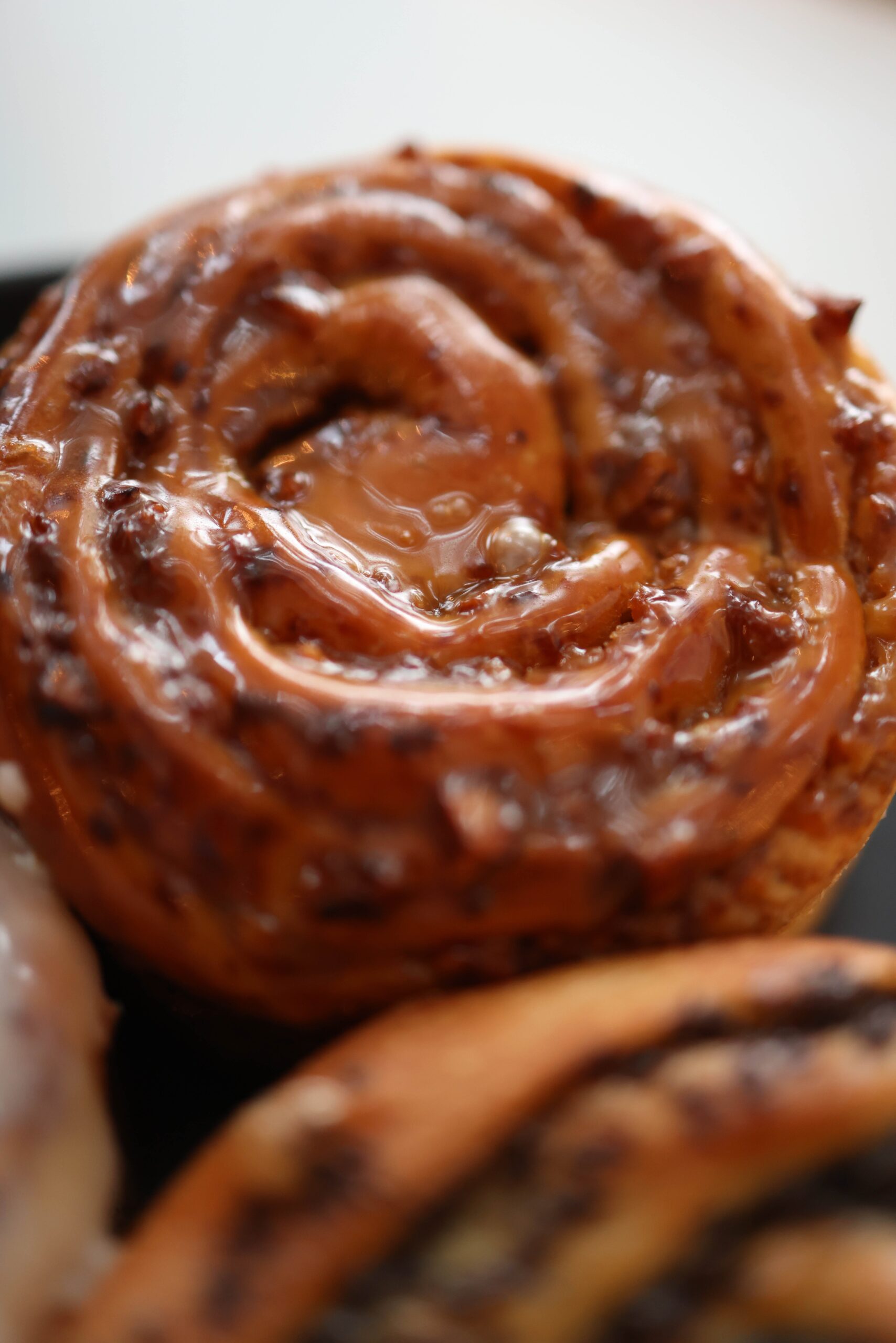Are you ready to take your baking skills to the next level? Look no further than the fascinating world of baking powder. In this article, we will explore the science behind this magical ingredient that brings our cakes and pastries to new heights. Get ready to uncover the secrets behind the bountiful rise and tender texture of your favorite baked goods. With Tastepan’s expert cooking tips and techniques, you’ll become a baking aficionado in no time. So, grab your mixing bowls and let’s dive into the mesmerizing science of baking powder, where success is just a rise away.

What is Baking Powder
Baking powder is a key ingredient in the world of baking, responsible for making our cakes rise, our bread fluffy, and our cookies soft and chewy. It is a leavening agent used to create the desired texture and volume in baked goods. Without baking powder, many of our favorite treats would be dense and flat.
Definition of Baking Powder
Baking powder is a dry chemical leavening agent composed of a mixture of alkaline and acidic compounds. When combined with moisture and heat, these compounds undergo a chemical reaction that produces carbon dioxide gas. The gas bubbles trapped in the dough or batter cause it to expand and rise, resulting in a lighter and more airy texture.
Composition of Baking Powder
Baking powder typically consists of three main components: sodium bicarbonate (also known as baking soda), an acidifying agent, and a drying agent. The sodium bicarbonate acts as a base, while the acidifying agent provides the acidic component necessary for the chemical reaction. The drying agent prevents the moisture in the air from prematurely activating the reaction.
Chemical Reaction in Baking Powder
When baking powder is mixed with a liquid and heated in the oven, the acid and base components react with each other, producing carbon dioxide gas. This gas gets trapped in the dough or batter, causing it to rise. The high temperatures in the oven then cause the gas bubbles to expand, further increasing the volume of the baked goods. As the baking powder continues to react, the gas production continues, resulting in a light and fluffy texture in the final product.
History of Baking Powder
Baking powder has come a long way throughout history, with various cultures and civilizations discovering different methods of achieving leavened baked goods.
Origins of Baking Powder
The concept of using leavening agents can be traced back to ancient civilizations like Egypt and Greece. Egyptians discovered that fermenting dough with wild yeast would cause it to rise. In Greece, they used a combination of water and fermented barley to leaven their bread. However, it wasn’t until the late 18th century that the precursor to modern baking powder was developed.
Early Challenges and Improvements
Early forms of leavening agents, such as yeast and potash, were commonly used, but they had limitations and drawbacks. Yeast required time for fermentation, which was not always practical, and potash had a strong alkaline taste. In the mid-19th century, chemists began experimenting with different combinations of acids and bases to create a more convenient and effective leavening agent.
Key Innovations in Baking Powder
The breakthrough in baking powder came with the development of the “double-acting” variety. This type of baking powder releases carbon dioxide gas twice during the baking process. The first reaction occurs when it comes into contact with moisture, while the second reaction takes place when exposed to heat in the oven. This innovation allowed for more control over the leavening process and improved the texture and consistency of baked goods.

Function of Baking Powder in Baking
Baking powder plays a crucial role in achieving desirable qualities in baked goods, such as lightness, volume, and texture.
Leavening Agent
As a leavening agent, baking powder helps dough and batter to rise, creating a lighter and more airy texture. Without the presence of baking powder, baked goods would be denser and less appetizing.
Gas Production
The chemical reaction in baking powder produces carbon dioxide gas, which gets trapped in the dough or batter. The gas bubbles expand when exposed to heat, causing the dough or batter to rise and increasing its volume.
Aeration and Volume Expansion
Baking powder’s ability to create aeration and volume expansion in baked goods is essential for achieving the desired light and fluffy texture. It contributes to the overall appearance and mouthfeel of the final product.
Texture Improvement
In addition to leavening, baking powder also acts as a tenderizer, improving the texture of baked goods. It helps create a delicate crumb structure and contributes to the moistness and tenderness of cakes, muffins, and other treats.
Different Types of Baking Powder
Not all baking powders are created equal, and there are different varieties available to suit various dietary needs and baking applications.
Single-Acting Baking Powder
Single-acting baking powder is a traditional type that releases gas immediately upon contact with a liquid. It is commonly used in recipes that require immediate rising and baking, as the leavening action occurs once and does not continue in the oven.
Double-Acting Baking Powder
Double-acting baking powder, on the other hand, undergoes two stages of gas release. The first release occurs when the baking powder is mixed with liquid, while the second release happens when exposed to heat during baking. This type of baking powder provides a more controlled and prolonged leavening action, resulting in better texture and volume.
Aluminum-Free Baking Powder
Aluminum-free baking powder is an alternative for those who prefer to avoid aluminum in their baking. It contains acids that do not react with aluminum, ensuring that no metallic taste is transferred to the final product.
Gluten-Free Baking Powder
For individuals with gluten sensitivities or celiac disease, gluten-free baking powder is available. It is made with gluten-free versions of the acidifying agents, ensuring that the baking powder is safe to use in gluten-free recipes.

Chemistry Behind Baking Powder
Understanding the chemistry behind baking powder is important for achieving the best results in baking.
Main Ingredients of Baking Powder
The main ingredients of baking powder include sodium bicarbonate (baking soda), an acidifying agent (such as cream of tartar or sodium aluminum sulfate), and a drying agent (such as cornstarch). These ingredients work together to create the desired chemical reaction and leavening effect.
Role of Sodium Bicarbonate
Sodium bicarbonate acts as a base in the chemical reaction that takes place in baking powder. When it comes into contact with the acidifying agent and moisture, it releases carbon dioxide gas, causing the dough or batter to rise.
Acidic Components in Baking Powder
The acidic component in baking powder is crucial for the chemical reaction to occur. Common acidifying agents used in baking powder include cream of tartar, monocalcium phosphate, and sodium aluminum sulfate. These acids react with the sodium bicarbonate to produce carbon dioxide gas.
pH and Acid-Base Reaction
The acid-base reaction that occurs in baking powder is pH-dependent. The acidifying agent lowers the pH of the dough or batter, creating an acidic environment necessary for the reaction. The interaction between the alkaline base (sodium bicarbonate) and the acidic agent results in the release of carbon dioxide gas.
Factors Affecting Baking Powder Performance
Several factors can impact the performance of baking powder and its ability to leaven baked goods effectively.
Freshness of Baking Powder
The freshness of baking powder plays a significant role in its performance. Over time, baking powder can lose its potency, reducing its ability to release carbon dioxide gas and leaven the dough or batter. It is important to check the expiration date and replace old baking powder to ensure optimal results.
Storage Conditions
Proper storage conditions are essential for maintaining the quality of baking powder. It should be stored in a cool, dry place in an airtight container to prevent moisture absorption. Exposure to moisture and humidity can cause the baking powder to clump and lose its effectiveness.
Temperature and Activation
Temperature also affects the activation of baking powder. Higher temperatures can accelerate the reaction, causing the gas to release more rapidly and potentially resulting in uneven rising or collapsing of the baked goods. It is important to follow recipe instructions and baking temperature recommendations for optimal results.
Interaction with Other Ingredients
Baking powder can interact with other ingredients in a recipe, such as acidic fruits or dairy products. These ingredients may increase or decrease the leavening action of the baking powder, depending on their acidity levels. It is important to consider these interactions and choose the appropriate type and amount of baking powder for the recipe.
Substitutes for Baking Powder
In some situations, you may find yourself without baking powder in your pantry. Fortunately, there are a few alternatives that can be used to achieve similar results.
Baking Soda and Acidic Components
Baking soda can be used as a substitute for baking powder by combining it with an acidic component, such as cream of tartar or lemon juice. The ratio is typically one part baking soda to two parts acid. However, it is important to keep in mind that baking soda alone does not have the same leavening power as baking powder, so the results may differ slightly.
Yogurt and Buttermilk
Yogurt and buttermilk are acidic ingredients that can help create a similar leavening effect as baking powder. When used in recipes that require baking powder, you can substitute some or all of the baking powder with yogurt or buttermilk. These ingredients provide the necessary acidity for the leavening reaction.
Whipped Egg Whites
Whipped egg whites can be used as a leavening agent in certain recipes. By beating egg whites until they form stiff peaks and then folding them into the batter, you can achieve a light and airy texture similar to what baking powder would provide.
Self-Rising Flour
Self-rising flour is a convenient alternative to baking powder, as it already contains a leavening agent. It is typically a combination of all-purpose flour, baking powder, and salt. When using self-rising flour, you can omit the additional baking powder called for in the recipe.
Baking Powder in Different Baked Goods
Baking powder is a versatile ingredient used in a wide range of baked goods, each benefiting from its leavening properties in unique ways.
Cakes and Cupcakes
In cakes and cupcakes, baking powder is essential for achieving a light and airy texture. It helps the batter rise, creating a fluffy and tender crumb structure. Without baking powder, cakes would be dense and heavy.
Bread and Quick Breads
Baking powder is not typically used as the sole leavening agent in bread, but it is commonly found in quick bread recipes. Quick breads, such as banana bread or muffins, rely on baking powder to provide the necessary lift and volume.
Pancakes and Waffles
Baking powder is a crucial ingredient in pancakes and waffles, as it helps create a light and fluffy texture. The gas released by the baking powder causes the batter to rise, resulting in pancakes and waffles with a pleasant thickness and softness.
Cookies and Biscuits
In cookies and biscuits, baking powder helps create a tender and soft texture. It contributes to the overall spread and rise of the dough, resulting in cookies that are chewy and biscuits that are light and flaky.
Tips and Tricks for Using Baking Powder
To achieve the best results when using baking powder in your recipes, here are some helpful tips and tricks to keep in mind:
Proper Measurement
Accurate measurement of baking powder is crucial for achieving optimal results in baking. Use a measuring spoon specifically designed for dry ingredients and level off the excess with a straight edge. Adding too much or too little baking powder can affect the texture and rising of the baked goods.
Balancing with Other Ingredients
Consider the other ingredients in your recipe when using baking powder. If your recipe includes acidic ingredients, such as buttermilk or yogurt, you may need to adjust the amount of baking powder accordingly. Too much baking powder can result in an overly puffy or bitter taste, while too little may lead to a dense texture.
Sifting and Incorporation
Sifting the dry ingredients, including the baking powder, ensures even distribution and prevents clumps in the batter or dough. Incorporate the baking powder gently into the mixture, being careful not to overmix. Overmixing can cause the gas bubbles to deflate, resulting in a denser final product.
Testing for Freshness
To test the freshness of your baking powder, you can perform a simple test. Combine a small amount of baking powder with hot water. The mixture should immediately fizz and produce bubbles. If there is no reaction or the fizzing is minimal, it may be time to replace your baking powder.
Baking Powder Alternatives in Traditional Cuisine
While baking powder is commonly used in many cuisines, different cultures have their own unique methods of achieving leavened baked goods.
Yeast as a Leavening Agent
In traditional bread-making, yeast is the primary leavening agent. Yeast-based dough requires proofing, which involves activating the yeast with warm water or milk and allowing it to feed on sugars, producing carbon dioxide gas to leaven the dough. This process takes more time compared to baking powder but results in a complex and distinct flavor profile.
Fermented Doughs
In some cultures, fermented doughs are used to achieve leavened baked goods. These doughs rely on naturally occurring yeast and bacteria to undergo fermentation, similar to the sourdough process. Fermentation not only leavens the dough but also contributes unique flavors and textures.
Tartaric Acid and Cream of Tartar
Tartaric acid and cream of tartar have long been used in traditional cooking and baking. These acidic ingredients can be used with alkaline agents, such as baking soda, to create a leavening effect. Cream of tartar, in particular, is a byproduct of winemaking and is commonly used in recipes that require egg whites to stabilize and for its leavening properties in some traditional baking.
Baking Powder in Different Cultures
Baking powder is widely used in various global cuisines, including American, British, and Australian. It has become a staple in many households worldwide, offering convenience and reliability in achieving light and fluffy baked goods.
Baking powder is undoubtedly a game-changer in the world of baking. Its ability to leaven dough and batter, create volume and airy textures, and improve the overall quality of baked goods has revolutionized baking techniques and has made it possible for home bakers and professionals alike to create delectable treats. Understanding the science behind baking powder and its various applications can help you master the art of baking and elevate your culinary creations. So grab your apron, dust off your measuring spoons, and let baking powder take your baked goods to new heights!

